|
Buon fresco is a very labor intensive art form…and in many ways is very similar to ceramics. That being said, it was the perfect workshop for me to take this summer, especially in preparation for the fall. While there is so much information and process involved, I will try my best to summarize what it is that I learned. If you would like more detailed information you can visit the website, created by my instructor Michael Nichols, buonfresco101. In the workshop we created two types of frescos. One on a large wall structure and the others on small ceramic tiles. There is a cement mixture that is referred as the “scratch coat,” which is only really needed for large structured frescos and is lime, sand, and cement. The main key for fresco is that the plaster has something textured and absorbent to hold on to. The second layer applied is called the “brown layer” which consists of sand and lime. The final layer on a fresco is the “painting coat.” This is lime and very fine sand or instead of lime you can use marble dust which gives a whiter and almost sparkling surface. The amount of water used in your fresco layers determines the amount of time you have before curing begins. When the surface cures a chemical reaction occurs creating crystals on the surface of your fresco which seals the pigment into the plaster! The images you see below are a compilation of the steps we took in creating the large wall fresco. Michael taught us this specifically to experience joining two sections of fresco. "Giornata" is a term, originating from an Italian word which means "a day's work." This describes the daily segments of the painting. For your small ceramic tiles the “brown layer” is not necessary but it is important to polish the surface carefully. I struggled with timing this properly and unfortunately there were certain areas of my fresco that did not take the pigment. The next step in creating your fresco is the image transfer which I spoke about a bit in my previous post. You can apply your image through “pouncing” with charcoal dust or you may use tracing paper and apply pressure with a rounded point. Both of these techniques will effectively leave a tracing of your image…it’s just a matter of which you prefer. Painting buon fresco is all about timing and knowing when the surface is ready for the next step. The layers must be absorbent and be able to immediately take the pigment into its surface. You will be able to know when you are ready to paint if the water in your brush is absorbed. You will paint your image with a subtle “verdaccio” or underpainting in order to have an idea of the values as you paint. Remember that you only have maybe a 5 hour window of time to paint before your fresco cures! When painting you must use pigments mixed with distilled water only. Regular water should be avoided when painting fresco and the milk from your lime can be used to create opaque layers. The beauty of fresco is the amount of layers painted through time to create colors and tones. We practiced a great deal painting indirectly…meaning creating an area of green by applying transparent layers of yellow and blue over one another. You must NEVER paint over the same area twice and too soon. The fresco needs time to absorb the color, and painting too quickly and too often can damage the crystals on the surface and the absorbency of your fresco. Once you have finished painting your fresco you must allow it to cure for atleast two days before attempting to wash it under water. If painted correctly and like a true buon fresco, the pigment will not move during the rinsing. It is not necessary to wash your fresco, but is an exciting experience! Some fresco artists will finish their piece with a wax layer (but only if you have not rinsed your fresco) which helps to create a smoother finished surface. This was a very simplified write up of the basic steps necessary to create a buon fresco...there are so many more details and processes involved. We created the majority of our own materials which also helped immensely with cost.
|
|


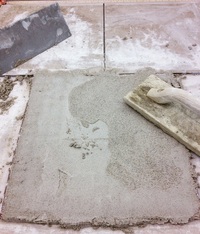
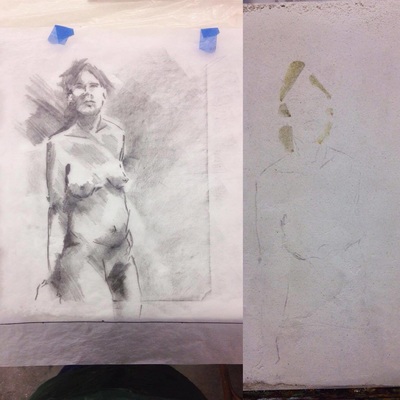
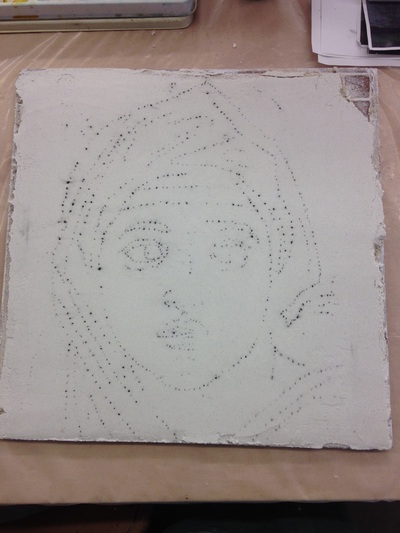


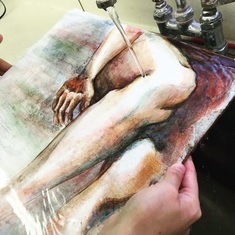


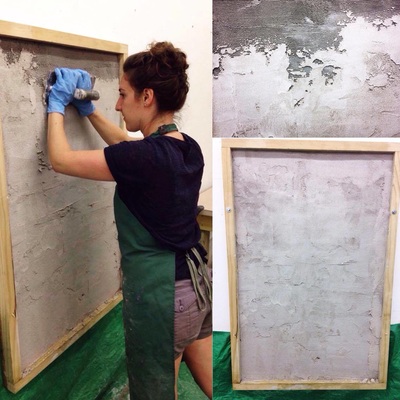

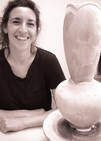
 RSS Feed
RSS Feed